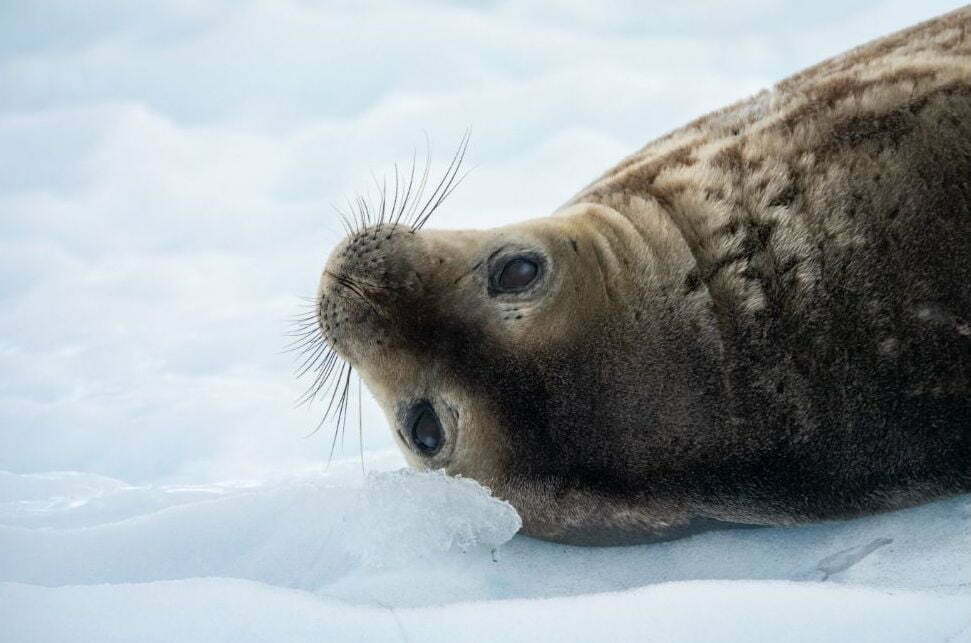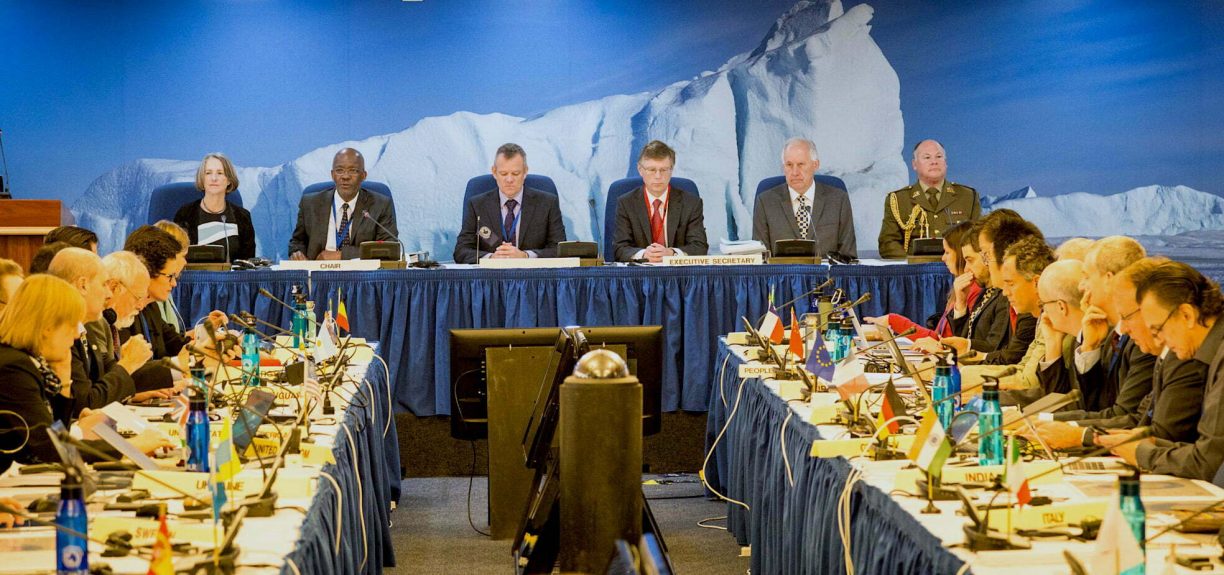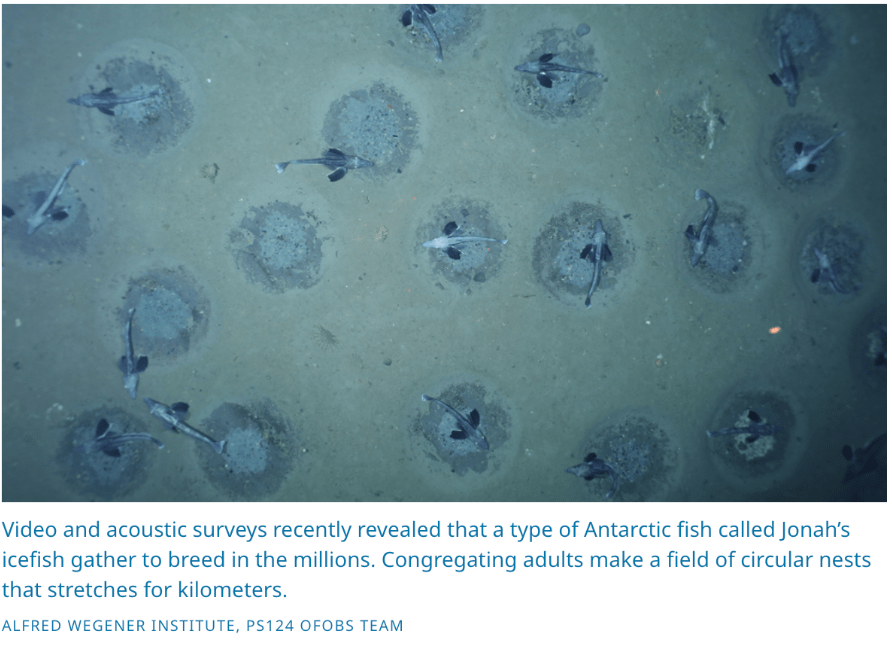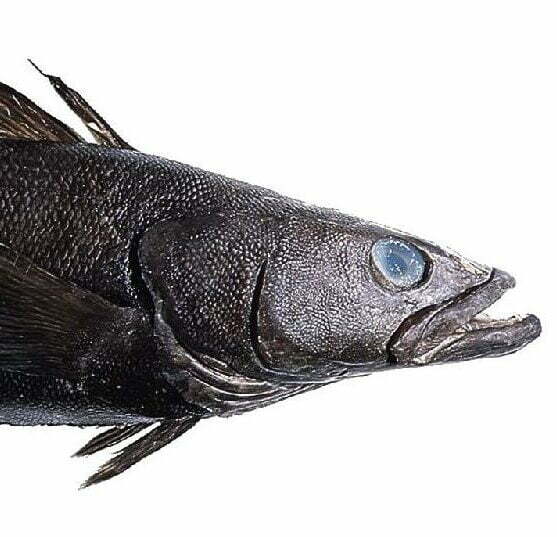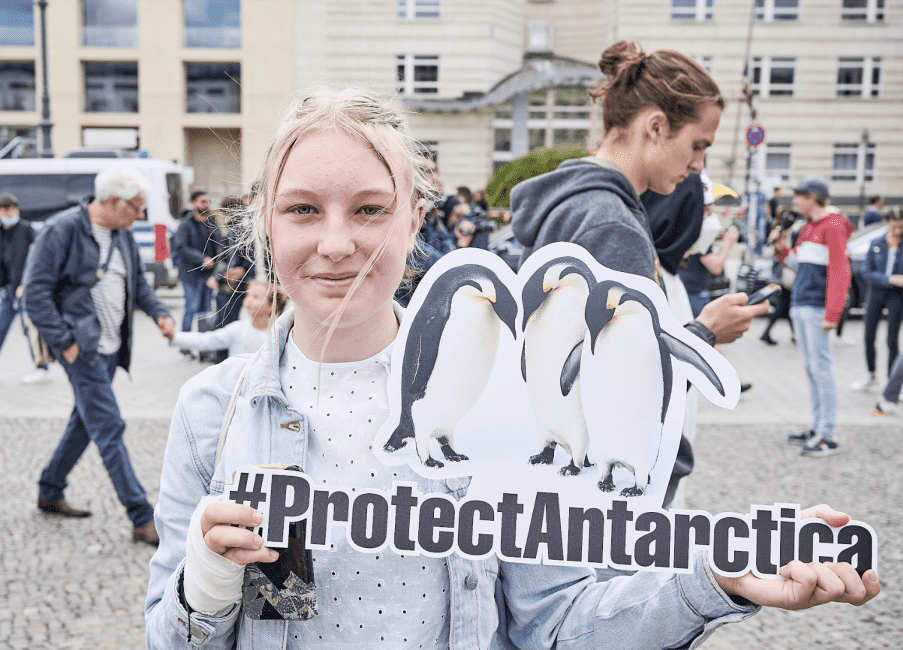Weddell Sea MPA
The mysterious, ice-covered Weddell Sea contains a vibrant marine ecosystem in urgent need of protection.
Welcome to the Weddell Sea
WEDDELL SEA MPA
This polar wilderness is best-known as the setting for Shackleton’s dramatic Endurance expedition. Today, wildlife thrives here in some of the most pristine, intact ecosystems on earth.
The Weddell Sea is situated in the Southern Ocean, south of the Atlantic Ocean and east of the Antarctic Peninsula. Along the icebound coastline, penguins cluster in noisy rookeries as Antarctic seabirds wheel overhead. Offshore, seals and whales feed on banquets of krill while, far below, an array of unusual creatures – many of them found nowhere else on earth – thrives on the nutrient-rich seabed. Glass sponges and cold-water corals are but some of the unique creatures that call the Weddell sea floor home.
The Weddell Sea also provides a vital sanctuary for juvenile Antarctic krill (Euphausia superba), ice krill (Euphausia crystallorophias), Antarctic silverfish (Pleuragramma antarctica) and Antarctic toothfish (Dissostichus mawsoni). In the shelter of the ice-covered sea, these species hatch, feed and grow to maturity, going on to play an important role in the food web.

What’s happening?
WEDDELL SEA MPA
The Weddell Sea is changing rapidly. Warmer, windier weather is affecting sea ice and other ocean habitats, putting pressure on finely balanced ecosystems to adapt. Despite this, the Weddell Sea is not fully protected.
In 2018, Germany proposed the Weddell Sea marine protected area (MPA) to the nations charged with protecting the Southern Ocean. It would offer protection to 790,000 square miles (over 2 million square kilometers) of virtually untouched marine wilderness, including extremely rare and vulnerable polar habitats.
The proposal is the product of years of research. Scientists studied an area more than twice the size of Alaska to identify the regions most in need of protection. If established, the Weddell Sea MPA will be the largest MPA on earth, providing vital protection for polar ecosystems as they adapt to warmer, more acidic oceans due to the climate crisis.
Initial concerns
WEDDELL SEA MPA
The proposed Weddell Sea MPA extends from the well-researched waters off the Antarctic Peninsula to the extremely remote, inaccessible Queen Maud Land coast. While some parts of the proposed MPA are well-understood, there are areas we still know very little about.
When the proposal was presented to CCAMLR in 2018, Norway initially withheld its support, calling for more research into the eastern sector. To obtain Norway’s support, the proposal was divided into two zones, or ‘phases’.
The following year, Norway became an official advocate and co-proponent of the Weddell Sea MPA proposal. The proposal now has widespread support, with Australia, the European Union and its Member States, India, New Zealand, Republic of Korea, Ukraine, the United Kingdom and the United States of America and Uruguay joining as co-proponents.

A phased approach
WEDDELL SEA MPA
Phase 1
The western sector of the proposal, marked yellow on the map, includes coastal areas along the east Antarctic Peninsula, and the Weddell Sea gyre and ice shelves. The boundaries and zoning within this MPA have been extensively researched, and are supported by the best available science.
Phase 2
In the eastern (Maud) sector, shaded blue on the map, CCAMLR Members are conducting ongoing research to develop a clearer understanding of this inaccessible part of the Weddell Sea. Their discoveries will inform the boundaries and zones of special protection in the Phase 2 proposal.
Support the campaign today.
WEDDELL SEA MPA
Proposed Weddell Sea MPA
Watch this short video from the Alfred-Wegener-Institut to learn more.
WEDDELL SEA MPA
Why it’s important
The Weddell Sea is changing rapidly. Research shows that in parts of the Weddell Sea, deep layers of the ocean are warming five times faster than the rest of the ocean at the same depth.

Securing vital habitats
By creating large zones where human activity is restricted or prevented, MPAs provide refuges for vulnerable species whose habitat may be changing dramatically.

Creating refuges for cold-water wildlife
The Weddell Sea region has been identified as a potential climate refuge for penguins, seals, whales, ice-dependent species and rare cold-water creatures.

Preserving a natural laboratory
The Weddell Sea is one of the few near-pristine ecosystems on the planet. Due to its remoteness and heavy ice cover, limited or no fishing has taken place here, making it an ideal ’natural laboratory’ for future research.

Protecting unknown polar wonders
The Weddell Sea is one of the Earth’s last great wilderness areas, and scientists are still uncovering the mysteries of this remote region. Recent groundbreaking discoveries hint at a vast, unknown and wondrous world hidden below the ice.
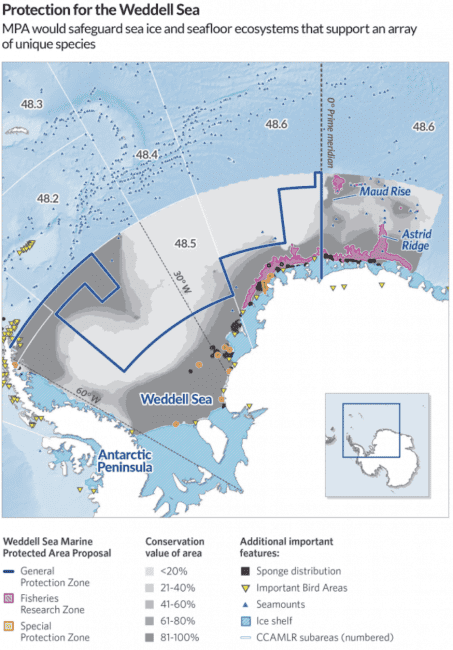
What is permitted in the MPA?
WEDDELL SEA MPA
The proposed Weddell Sea MPA (Phase 1) contains three zones.
The majority of the MPA is designated a General Protection Zone, closed to all commercial fishing. The purpose of this zone is to maintain ecosystem health, boost climate resilience, and create scientific reference areas to improve our understanding of human impacts in Antarctica.
Special Protection Zones marked orange on the map, pinpoint vulnerable and rare habitats such as nesting sites for bottom-dwelling fish and shelf areas where rare, endemic sponges live. All fishing is prohibited in these areas.
The future of fisheries
WEDDELL SEA MPA
Fisheries Research Zones allow fishing for research purposes only. Part of this zone will be closed to all fishing, providing a reference zone for studying the effect of toothfish fishing on the broader ecosystem.
Building our understanding of the population, life-history and ecology of Antarctic toothfish populations will help CCAMLR fulfill its mandate to take a precautionary approach to Antarctic toothfish management.
Now is the time
Weddell Sea MPA
The evidence is clear. Marine protected areas are scientifically proven to be the most effective way to limit the damaging impacts of human activities and support a vibrant, healthy ocean.
ASOC strongly believes that CCAMLR, the international body charged with designating MPAs, has failed to act decisively for too long.
What ASOC is doing
ANTARCTIC PENINSULA MPA
We work for Antarctic marine protection by:
Representing the Antarctic conservation community at the highest levels of Antarctic governance.
Presenting timely, science-based policy proposals at CCAMLR meetings to support decision-making based on the best available science.
Advocating for policies that reduce the stress on Antarctic ecosystems from human activities such as fishing, tourism, and scientific research.
Raising the profile of Antarctic conservation issues, ensuring that they remain on the agenda across international governance systems.
“The global coronavirus pandemic has made it clear that we need to change our behavior and work to protect nature instead of exploiting it. ASOC calls on CCAMLR to demonstrate leadership and fulfill their commitment to meaningful protection of the Southern Ocean.”
Claire Christian
Executive Director, Antarctic and Southern Ocean Coalition
What you can do
WEDDELL SEA MPA
Now is the time to call on CCAMLR to make good on its commitment to establish a network of Antarctic marine protected areas. Join us as we help secure a resilient future for Antarctica and the global ocean today.
 ASOC
ASOC
